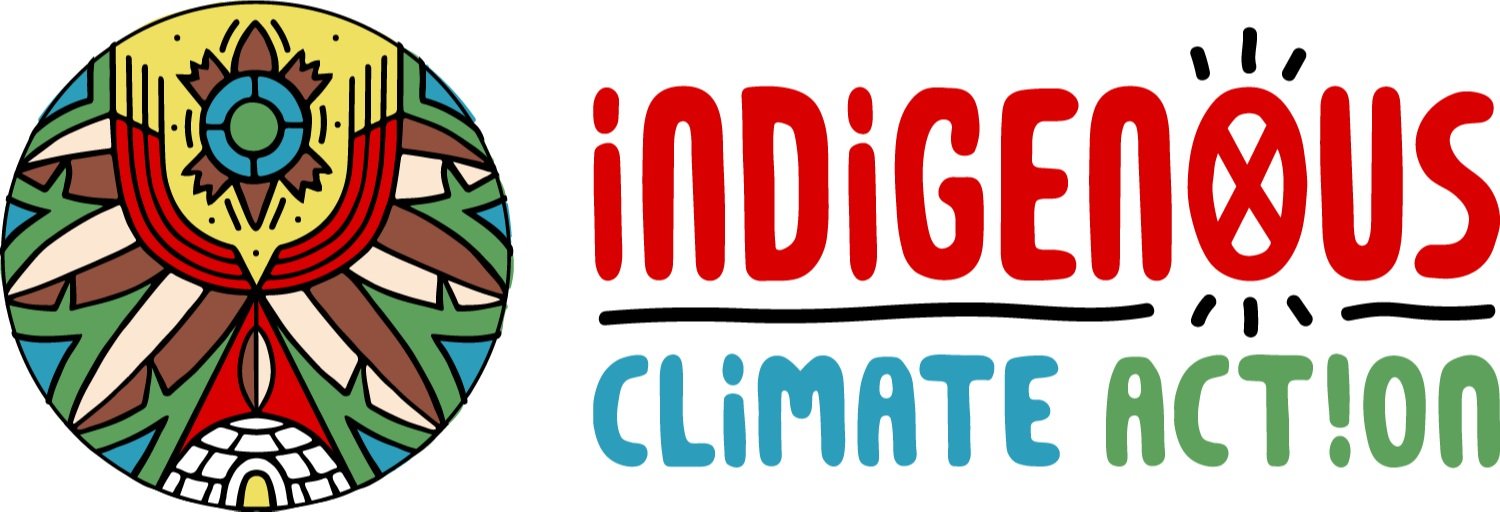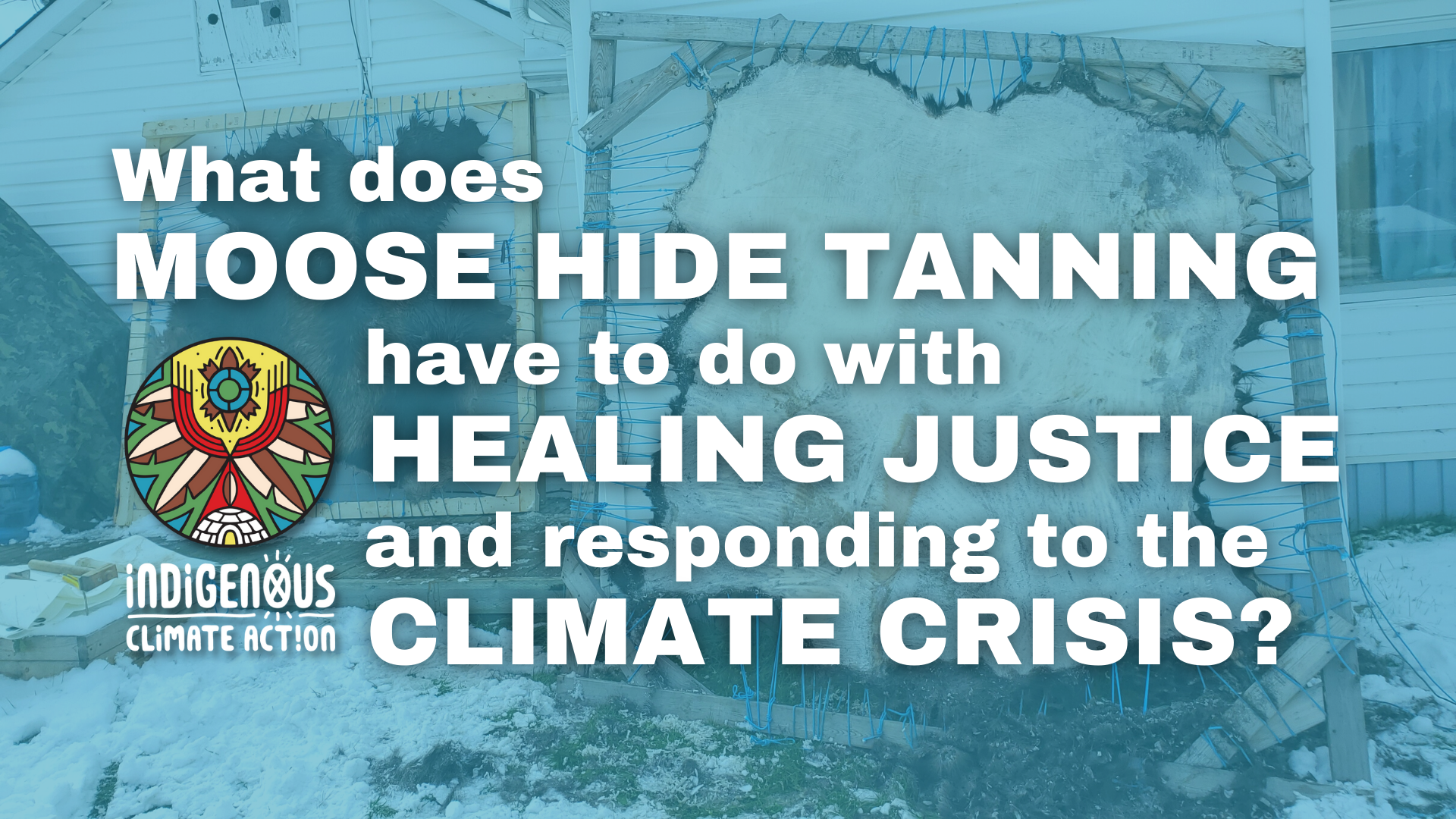Healing with the Land
There’s a cultural resurgence of moose hide tanning in many Indigenous communities. Kanina Terry (Anishinaabe from Lac Seul First Nation) is one of many moose hide tanners who are learning this skill, sharing as she goes and building capacity in others. For many, moose hide tanning is as much a process for healing.
Healing justice is a framework that recognizes the impact of trauma and violence on individuals and communities and names collective processes that can help heal and transform these forces. This justice includes healing, well-being, and not only surviving, but thriving.
For those engaged in Indigenous cultural revitalization efforts, the importance of this work can feel critical and urgent after generations of colonial disruption. This urgency can feel even more compelling as the seasons for processing hides are impacted by climate change.
For Kanina Terry, this includes a shortened time period to do frost scraping (which requires cold winter temperatures). Those who are working to care for the land and water and address the climate crisis, also feel a timely responsibility to address climate change and its impacts on Indigenous communities.
What happens when our sense of urgency, whether for moose hide tanning or organizing for Indigenous-led climate solutions and responses to climate change become unsustainable for our bodies, minds, spirit and emotions?
By looking to land based practices we can better embody within our communities sustainable organizing to address the climate crisis.
We often learn by doing, both with land-based practices and also within movement organizing. The land shows us our limits, capacity, need for each other and how to be in balance. This can include reflecting on how we work towards cultural revitalization long-term and Indigenous-led climate solutions.
Kanina shared her thoughts about moosehide tanning, urgency to maintain these practices, burnout and lessons learned. Lessons that can be applied more broadly to other spaces, such as Indigenous climate activism and other movement spaces.
Video credit: video provided by Kanina Terry
Some key take-aways include:
Tackling a moose hide over a length of time (4 seasons).
Not how we would historically do hides (individual/collective). Moose hide tanning was commonly done with a whole community of people. Building skills within the community can help to increase the capacity to do hides together.
Break it down, and work on what you can.
Said “yes” to every hide - burned out, took longer to recover
Learning about your own capacity and limits
“I can say no”
Pacing - Fall / Winter / Spring / Summer
Adapting, making the work more accessible for oneself (quarter or half moose)
Learning how to ask for help
Menstrual cycle awareness (bleeding/ovulation) energy levels
These key take-aways provide important lessons for how we can approach climate justice, especially for Indigenous communities on the front-line of these struggles. Land-based practitioners, including hide tanners, remind us of how hard work can be done in sustainable ways, about the power of collective action, pacing ourselves with natural cycles and increasing community capacity.
Similar to how Kanina is helping build moose hide tanning skills in communities, ICA’s Climate Leadership Training helps to build capacity so that this work is spread across a larger group of people. She has also had to learn to say no and listen to the land and her body. Earlier this Fall ICA’s team was supported to identify and honor their own boundaries and also learned more about the cycles within (including menstrual cycle awareness) and how these cycles relate to climate and healing justice work. These skills are an important intervention for the sustainability of our movements.
How we show up in this work needs to understand that healing, pacing, rest, boundaries and building collectively is mutually beneficial for climate justice. While the work can feel and is urgent, our healing is as well.
While we shouldn’t turn away from the climate reality, we can find ways to better prevent burnout, and promote rest and healing with these valuable teachings shared by land-based teachers and from the land.
Learn more about Kanina Terry and her journey with moose hide tanning at: https://kanina.ca Instagram: @criesovermoosehides
About the Author
Erin Konsmo (they/them/she/her) is a Prairie queer of Métis and settler Canadian descent. They grew up in central Alberta and are a member of the Métis Nation of Alberta. Erin has spent over a decade working in sexual and reproductive health and continues community work in the areas of gender and sexuality, birth work, consent education, gender-based violence and health promotion. They have supported community initiatives including the Native Youth Sexual Health Network, Walking with our Sisters and Onaman Collective. Erin now supports ICA as our Healing Justice Manager.




